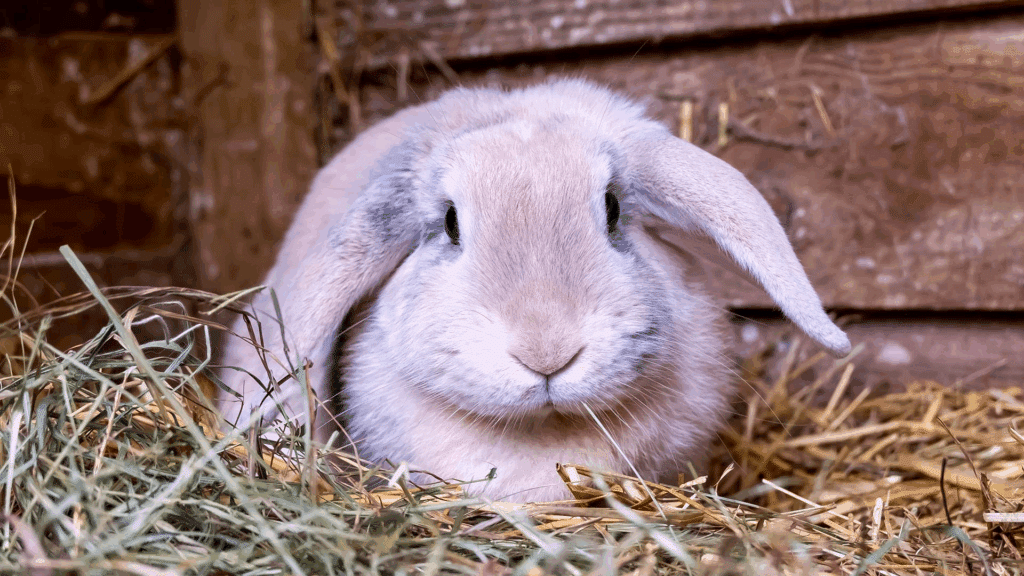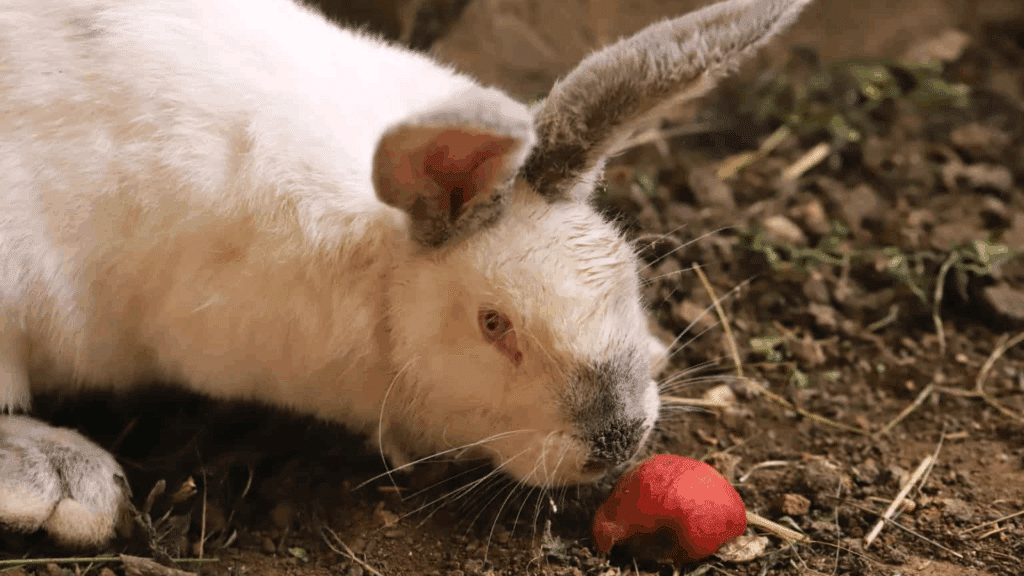Choosing the right bedding for your rabbit isn’t just about comfort; it’s about keeping them healthy and happy. Many new owners focus on food, toys, and cages, but overlook bedding, which plays a big role in hygiene and safety.
The wrong type can lead to breathing issues or skin problems, while the right one keeps their space soft, dry, and odor-free.
In this guide, you’ll learn:
- What to look for in safe, non-toxic rabbit bedding
- The best materials for comfort, cleanliness, and absorption
- Which bedding types can harm your rabbit’s health
- Tips to choose the right bedding setup for your rabbit’s needs
By the end, you’ll know how to create a healthy, cozy space for your rabbit.
What to Look for in Safe Rabbit Bedding?
Choosing safe bedding for your rabbit is about more than comfort; it’s about health and hygiene. Soft bedding cushions their feet, while absorbent materials keep the area dry and odor-free.
Odor control matters, and dust-free bedding helps prevent lung irritation and breathing issues.
Natural, non-toxic materials like paper-based, plant-based, or hay bedding are best since rabbits tend to chew and explore their surroundings.
Avoid artificial scents or treated products, which can be harmful if ingested. Safe bedding not only keeps their habitat clean but also supports a calm, healthy living space.
By paying attention to softness, absorbency, and purity, you’ll create a comfortable home that keeps your rabbit happy, healthy, and stress-free.
Best Bedding Materials for Comfort and Absorption
When it comes to comfort and absorption, several bedding types work well for rabbits.
Paper-based bedding is soft, highly absorbent, and great at controlling odors, though it can be a bit pricey with frequent changes.
Aspen shavings are another safe choice; they’re natural, low in dust, and free from harmful oils found in other wood types. Hay bedding is comfortable and chew-safe, but needs regular replacement to stay clean and dry.
Fleece liners are reusable and gentle on paws, making cleaning easier, though they require frequent washing.
Each of these options supports your rabbit’s comfort, hygiene, and safety, depending on your budget and cleaning routine.
Bedding Types to Avoid for Your Rabbit’s Health
Some bedding materials may look fine at first, but can actually harm your rabbit. I’ve learned that a few common choices cause breathing issues or skin irritation, so it’s best to stay away from them.
- Pine and Cedar Shavings: These give off strong oils that can irritate your rabbit’s lungs and liver. I avoid them because the smell alone can make rabbits uncomfortable.
- Clay-Based Litters: They’re made for cats, not rabbits. When your rabbit digs or hops, clay dust can get into their nose and cause breathing problems.
- Scented or Treated Bedding: The perfumes and chemicals used for odor control might seem helpful, but they can trigger allergies or digestive issues.
- Newspaper with Heavy Ink: Some printed papers use inks that aren’t safe if chewed. I stick with plain, recycled paper instead.
By skipping these options, you keep your rabbit’s space safe, breathable, and worry-free.
Comparing Paper, Hay, and Wood Bedding
Every rabbit has different needs, so the right bedding depends on what matters most to you: comfort, cost, or easy upkeep.
| Bedding Type | Comfort | Cleaning Ease | Cost | Safety |
|---|---|---|---|---|
| Paper-Based Bedding | Very soft and gentle on paws; great for sensitive rabbits. | Easy to spot-clean and replace. | Slightly more expensive, especially with frequent changes. | Safe, non-toxic, and low in dust, ideal for daily use. |
| Hay Bedding | Naturally comfy and chew-safe; rabbits enjoy nesting in it. | Needs frequent changes since it absorbs poorly. | Affordable and easy to find. | Safe if changed often, but can get damp and moldy quickly. |
| Aspen Wood Shavings | Firm but still comfortable; keeps the cage dry. | Easy to scoop and refresh as needed. | Budget-friendly and long-lasting. | Safe when untreated and low in dust; avoid other wood types. |
Tips for Keeping Your Rabbit’s Bed Fresh and Clean
Keeping your rabbit’s bed clean doesn’t have to be hard. With a few simple habits, you can keep their space fresh, odor-free, and safe from dampness or mold.
- Spot-clean daily: Remove wet or soiled spots every day to stop odor and bacteria buildup.
- Do a full bedding change weekly: Replace all bedding once a week to keep the habitat fresh and dry.
- Use natural odor control: Sprinkle a thin layer of baking soda under the bedding (never on top) to reduce smells safely.
- Keep the area ventilated: Good airflow helps bedding dry faster and prevents mold growth.
- Check for damp spots often: Wet bedding can cause sore feet, so replace it as soon as you notice moisture.
How Bedding Affects Your Rabbit’s Hygiene and Comfort?

Good bedding is key to your rabbit’s hygiene and comfort. It absorbs moisture, reduces odor, and keeps their living space dry, helping prevent sore feet, skin irritation, and infections.
A clean, dry area also makes your rabbit more relaxed and active.
I’ve found that layering materials works best, placing paper-based bedding under hay gives extra absorption while keeping the surface soft and inviting.
This simple mix helps prevent dampness, reduces smell, and makes cleaning easier.
Spot-cleaning daily and changing all bedding weekly keeps their space fresh and healthy. Avoid letting waste build up, as it can cause discomfort or health problems.
With the right setup, your rabbit enjoys a clean, dry, and cozy home where they can rest, dig, and play comfortably every day.
Common Rabbit Bedding Mistakes to Avoid
Even with the right bedding, a few common mistakes can make your rabbit’s home less safe and comfortable. Using scented bedding might mask odors, but the fragrances can irritate your rabbit’s lungs and nose.
Skipping regular cleaning lets bacteria and odors build up, which can cause health problems.
A thin layer of bedding doesn’t absorb enough moisture, leaving the area damp and unpleasant. Dusty materials can lead to breathing issues, especially in enclosed spaces.
It’s also important not to mix safe bedding with pine, cedar, or clay-based litters, as they release harmful oils or dust.
Lastly, always check for damp or moldy spots; these can cause skin irritation and infections. Paying attention to these small details helps keep your rabbit’s space clean, comfortable, and healthy.
Signs Your Rabbit’s Bedding Needs to Be Changed
Knowing when to replace your rabbit’s bedding helps keep their space clean and healthy. Watch for these simple signs:
- Wet or damp spots: Moist bedding can lead to skin problems and sore feet.
- Strong odors: A noticeable smell means bacteria or ammonia is building up.
- Clumped or matted bedding: When the material sticks together, it’s no longer absorbing properly.
- Discoloration: Dark or stained patches show it’s time for a refresh.
- More flies or insects: Pests are a clear sign of waste buildup.
- Your rabbit avoiding certain areas: If they stop resting where they usually do, the bedding may be dirty or uncomfortable.
Conclusion
Choosing the right bedding for your rabbit comes down to balance, keeping them safe, comfortable, and clean. The best bedding supports good hygiene, prevents odors, and gives your rabbit a cozy place to rest.
What works well for one rabbit might not suit another, so it’s important to pay attention to your rabbit’s habits and preferences.
If they dig, chew, or avoid certain areas, that’s a clue to try a different material or layering method.
Consistent cleaning and safe, absorbent bedding keep your rabbit’s space healthy and inviting. With a little trial and care, you’ll find the setup that keeps both you and your rabbit happy.
In the end, comfort and cleanliness go hand in hand for a healthy, content bunny.








